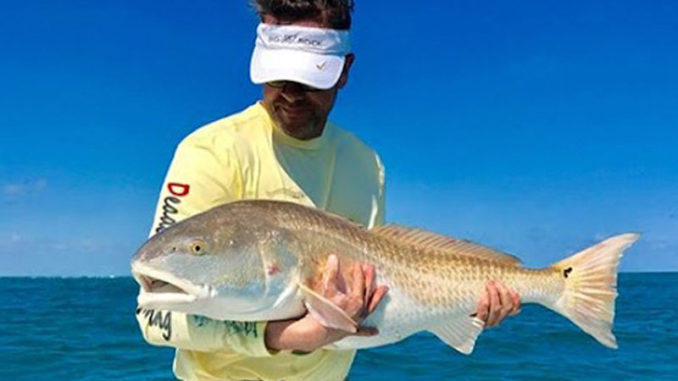
Bull reds are one of many species worth targeting this month
May is a transitional fishing month along North Carolina’s beaches, including for bull reds along the Crystal Coast.
“We’re venturing from spring — March and April — into summer fishing,” said Capt. Bryan Goodwin of Beaufort’s Native Guide Service. “We get a lot of migration in the spring with a trout run and early drum coming back.”
The key to finding almost all gamefish is finding baitfish, and May is no different, according to Goodwin (252-725-3961). Large schools of menhaden head west when water temperatures change. Other popular spring gamefish targets include king and Spanish mackerel, bluefish and cobia.
“Most of the adult reds still will be in the ocean in May, but they move closer to shore,” Goodwin said. “We had a relatively mild winter, but water temperature doesn’t trigger the menhaden migration per se; it’s the change in temperature. They migrate about the same time every year.”
Adult redfish may weigh from 20 to 60 pounds. Many depart offshore structures to follow menhaden. The largest reds, usually females, spawn from August through October around inlet channels and in Pamlico Sound.
Head to the shoals when weather allows
Goodwin fishes around Cape Lookout, on either side of the shoals that extend 19 miles from Beaufort Inlet. Two sloughs on either side of Shark Island and two near the Knuckle Buoy are routes for menhaden pushed through by tides and winds. Redfish gather to feed voraciously at these shoal cuts.
Not a lot of people fish the shoals because wind and waves make it chancy. But on calm days, Goodwin sight-casts artificial lures — 4- to 6-inch, black/silver swimbaits or bucktails — to bull reds in clear water.
“It’s difficult, challenging fishing, and you can fish only a small percentage of days at the shoals,” he said.
“I look for menhaden on the surface or with side-scan sonar,” said Goodwin, who uses a variety of spinning reels on 6-foot rods.
“I lighten up my tackle a bit, but it’s basically the same tackle I use for cobia,” he said. “(The rods) are similar to fishing with a popping cork — with slightly heavier line (20- to 40-pound test) and 2- to 3-ounce lures. I don’t change out factory hooks. Curlytails make the bucktails a little longer and may attract a cobia.”



Be the first to comment